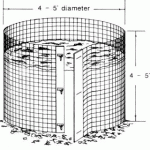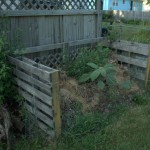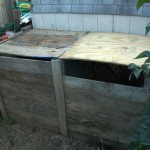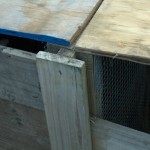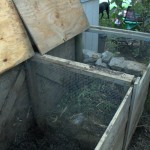Composting, what could be easier
Composting can be as easy or as hard as you want to make it. You can also spend a ton of money or spend very little. I have two composting areas in our yard and one was constructed with some sort of plan, the other was slapped together in a few minutes. Strangely enough both serve my needs.
If you want to go the cheap or quick route, I recommend, using something like palettes or wire mesh. Wire mesh can be formed into a roll and the edges zip tied together. I especially like this method as it is easy to move the compost bin or disassemble it to remove the compost. Pictured below are a couple of examples. The palette version sits behind my fence and holds mostly leaves and grass clippings once the leaves start to fall.
If you would like to make something more involved then you can make something similar to the following. Essentially I made three squares from 2x4s. I then covered the sides of the frames with hardware cloth. I bridged the frames together across the back of the bin to hold them at the desired dimension. I also add a couple of 1x4s across the bottom to keep the front from bowing outwards too much. The front edge of the bins have strips of wood that were screwed into the front to make a channel. The channel on mine accepts fence picket material. This is simply what I had laying around. I like using the strips of wood because you can make the front of the bin higher or shorter depending on how full your bin is. Here are some pictures to try to illustrate.
A couple of final tips.
- Having more than one bin makes turning the material much easier
- The true composting zealots suggest that you always keep your compost covered to prevent the nutrients from leaching into the ground below your bin
- Don’t put any meat or dairy products in your compost
- Don’t put any cat or dog feces in your compost
- A mix of roughly 50/50 “brown” to “green” material is best if you can
- Don’t build your bin against your house, the heat of the composting process has in some cases caused fires


